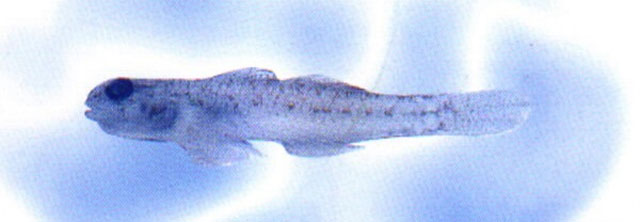| Gobiidae (Gobies), subfamily: Gobionellinae |
| 2.2 cm SL (male/unsexed) |
|
demersal; brackish; marine |
| Northwest Pacific: Japan, Hong Kong, China, Taiwan, Vietnam and Singapore. |
|
Dorsal spines (total): 7-7; Dorsal soft rays (total): 6-8; Anal spines: 1-1; Anal soft rays: 6-8. This small specis is distinguished by the following characters: D2 I,6-8; A I,6-8; pectoral rays 14-17; segmented caudal rays 15-16 in 9/7 pattern; lateral scales 24-27; transverse scale count 7-8; predorsal scales 7-10; opercle has at least two rows of cycloid scales, cheek scaleless; shoulder girdle is smooth; tongue is blunt; upper jaw teeth similar between male and female, in 2-4 rows, very small, sharp and close-set, while outer row teeth larger. Colouration: head and body whitish to yellowish brown, the scale margins edged with brown, presence of a small single or paired brownish spots or small blotches along mid-side of body with posteriormost spot at hypural crease, extending upward onto caudal fin as oval or rounded blotch (Ref. 126575). |
| Occurs in brackish waters (Ref. 43239); in intertidal estuarine habitats and river mouths, mud flats and mangroves. A reported small species apparently spawned in May and August and fed mostly on copepods and amphipods. Associated with several Pseudogobius, especially Pseudogobius pocilosoma (Ref. 126575). |
|
Not Evaluated (N.E.) Ref. (130435)
|
| harmless |
|
Source and more info: www.fishbase.org. For personal, classroom, and other internal use only. Not for publication.

